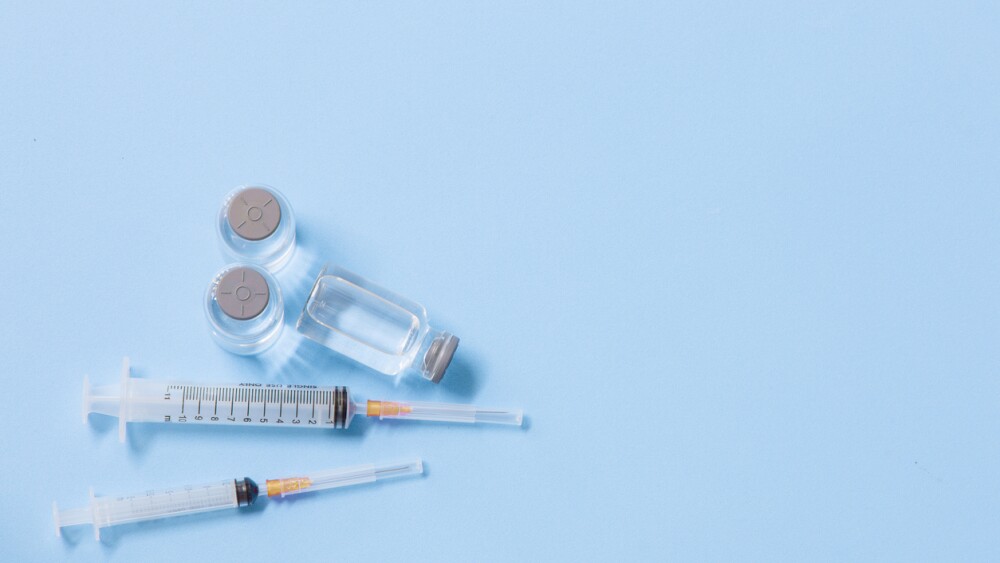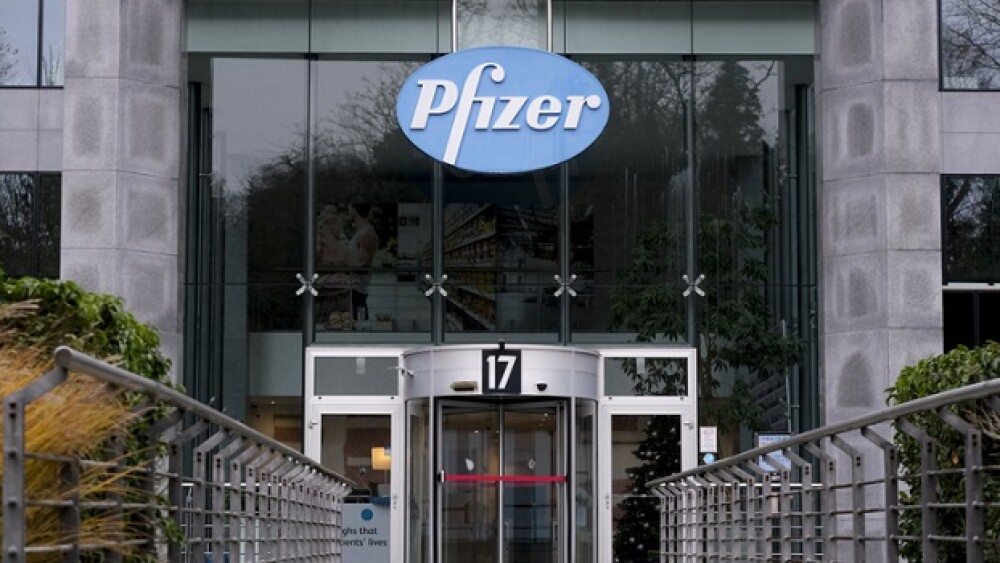- Additional data reinforce long-term efficacy of ACTEMRA across a broad range of rheumatoid arthritis patient populations -
NUTLEY, N.J., June 10 /PRNewswire/ -- One-year data from the two-year Phase III LITHE (TociLIzumab Safety and THE Prevention of Structural Joint Damage) study demonstrated that a greater proportion of rheumatoid arthritis (RA) patients treated with ACTEMRA(R) (tocilizumab), a novel interleukin-6 (IL-6) receptor inhibitor, in combination with methotrexate, experienced a significant inhibition in the progression of structural joint damage compared with patients treated with methotrexate alone. These data will be presented at the 10th Annual Congress of the European League Against Rheumatism (EULAR) in Copenhagen, Denmark, along with additional studies that support the use of ACTEMRA as a long-term treatment option for patients with moderately to severely active RA.
In the one-year LITHE study, disease remission (DAS28(1) <2.6) was demonstrated in 30 percent and 47 percent of patients treated with ACTEMRA 4 mg/kg and 8 mg/kg, respectively, compared with 8 percent of patients treated with placebo plus methotrexate.
"Inhibiting RA from progressing further by achieving disease remission provides real-life benefits to patients, while at the same time helping them maintain day-to-day function," said Joel Kremer, M.D., lead investigator of the LITHE study and Director of Research at The Center for Rheumatology in Albany, New York. "The LITHE study also demonstrated the efficacy of ACTEMRA even in patients with a relatively long disease duration, which suggests that it may be an effective treatment option for many RA patients."
Additionally, the one-year LITHE study results showed that patients treated with ACTEMRA (4 mg/kg or 8 mg/kg) plus methotrexate experienced a significant inhibition in the progression of structural joint damage, as measured by the change in the mean Genant-modified Sharp score(2), compared with patients treated with methotrexate plus placebo (0.29, 0.34 versus 1.1, respectively; p<0.001). In addition, data demonstrated that there were significantly more patients treated with ACTEMRA (4 mg/kg or 8 mg/kg) who experienced no progression of structural joint damage from baseline compared with methotrexate plus placebo-treated patients (81%, 85% versus 67%, p less than or equal to 0.0001), as measured by the Genant-modified Sharp score. Most patients also experienced improved physical function following treatment with ACTEMRA, as measured by the Health Assessment Questionnaire Disability Index (HAQ-DI).(3)
An additional study to be presented at the Congress is an interim analysis from two ongoing, long-term ACTEMRA extension studies consisting of patients who had completed one of four 24-week controlled studies of ACTEMRA as monotherapy or with DMARDs. Patients were treated with ACTEMRA 8 mg/kg every four weeks to assess the efficacy of ACTEMRA for up to two-and-a-half years across three patient populations: DMARD-IR (inadequate response), anti-TNF-IR and DMARD-naive patients (predominantly methotrexate-naive patients and patients without prior failure to methotrexate). The analysis showed that long-term efficacy was maintained in all three patient populations treated with ACTEMRA, as measured by ACR response rates and DAS28 scores.
ACTEMRA monotherapy was proven to be statistically superior to methotrexate in ACR20, ACR50 and ACR70 responses(4) (at six months), according to results of a post-hoc analysis of the AMBITION (Actemra versus Methotrexate double-Blind Investigative Trial In mONotherapy) study also to be presented at the Congress. The study showed that nearly 70 percent of patients receiving ACTEMRA monotherapy (8 mg/kg) achieved ACR20 compared with 52.5 percent of patients receiving methotrexate alone. More patients treated with ACTEMRA achieved ACR50 (44.1 percent) and ACR70 (28 percent) compared with the methotrexate group, 33.5 percent and 15.1 percent, respectively.
"The findings from these studies relating to the inhibition of IL-6 reinforce ACTEMRA as a viable treatment option for patients with RA," said Kenneth Bahrt, M.D., Global Medical Director, Autoimmunity, Roche.
About the LITHE Study
The LITHE trial, a three-arm, randomized, double-blind, placebo-controlled study, was designed to evaluate the efficacy and safety of ACTEMRA (4 mg/kg or 8 mg/kg) plus methotrexate compared with placebo plus methotrexate in RA patients for the prevention of structural joint damage, improvement in physical function and disease signs and symptoms over two years. Patients received either ACTEMRA intravenously every four weeks plus methotrexate weekly or placebo infusions every four weeks plus methotrexate weekly.
Data from the LITHE study also showed that patients treated with ACTEMRA (8 mg/kg or 4 mg/kg) plus methotrexate experienced a reduction in disease signs and symptoms at one year compared with patients treated with placebo plus methotrexate. At 52 weeks, 56 percent, 36 percent and 20 percent of RA patients treated with ACTEMRA 8 mg/kg plus methotrexate achieved ACR20, ACR50 and ACR70, respectively, and 47 percent, 29 percent and 16 percent of patients in the ACTEMRA 4 mg/kg arm achieved these ACR scores, respectively. In contrast, 25 percent, 10 percent and 4 percent of patients in the control group achieved ACR20, ACR50 and ACR70, respectively.
The study evaluated more than 1,200 patients at 137 sites in 15 countries, including the United States. ACTEMRA was generally well tolerated. The adverse events reported most frequently in the ACTEMRA arms of the LITHE study were serious infections.
About the Long-Term Extension Studies
The interim analysis was from two ongoing, open-label, long-term extension studies consisting of patients who had completed one of four 24-week controlled studies of ACTEMRA as monotherapy or with DMARDs. Patients were treated with ACTEMRA 8mg/kg every four weeks to assess the efficacy of ACTEMRA for up to two-and-a-half years across three patient populations: DMARD-IR (inadequate response), anti-TNF-IR and DMARD-naive patients, (predominantly methotrexate-naive patients and patients without prior failure to methotrexate). In DMARD-IR patients, a significant proportion achieved a 50 or 70 percent improvement in their disease signs and symptoms at 132 weeks, 66.7 percent (ACR50) and 43.9 percent (ACR70), and maintained ACR70 response for 24 consecutive weeks. Similar patterns of response were achieved with the anti-TNF-IR and DMARD-naive groups.
These multi-center studies evaluated more than 2,500 patients throughout the world. ACTEMRA was generally well tolerated. The adverse events reported most frequently in the ACTEMRA arms of the studies were upper respiratory tract infection, nasopharyngitis, headache and hypertension.
About the AMBITION Study
AMBITION, a two-arm, randomized, double-blind, placebo-controlled study, was designed to evaluate the non-inferiority and subsequent superiority of ACTEMRA monotherapy in patients with RA compared with methotrexate alone at 24 weeks. The main study examined patients who had not received methotrexate for at least six months beforehand and were randomized to receive either ACTEMRA (8 mg/kg) intravenously every four weeks plus placebo capsules weekly or placebo infusions every four weeks plus methotrexate weekly. The post-hoc analysis evaluated patients who were methotrexate- or DMARD-naive.
The study evaluated 673 patients from 252 sites in 18 countries, including the United States. ACTEMRA was generally well tolerated. The adverse events occurring in the AMBITION study were infections and gastrointestinal disorders.
About ACTEMRA(R) (tocilizumab)
ACTEMRA is the first humanized interleukin-6 (IL-6) receptor-inhibiting monoclonal antibody being studied for the treatment of RA. Studies demonstrate that reducing the activity of IL-6, one of several key cytokines involved in the inflammatory process, relieves both inflammation of the joints and certain systemic effects of RA. The extensive clinical development program conducted by Roche includes five Phase III clinical studies and has enrolled more than 4,000 patients in 41 countries, including the United States. The five Phase III studies are completed and have reported meeting their primary endpoints. ACTEMRA is currently under review by the U.S. Food and Drug Administration (FDA).
ACTEMRA is part of a co-development agreement between Roche and Chugai Pharmaceutical Co. In June 2005, ACTEMRA was launched by Chugai in Japan as a therapy for Castleman's disease; in April 2008, additional indications for rheumatoid arthritis, juvenile idiopathic arthritis and systemic-onset juvenile idiopathic arthritis were also approved in Japan. ACTEMRA (known as RoACTEMRA in Europe), was also recently approved in the European Union, Switzerland and India.
The serious adverse events reported in ACTEMRA clinical studies include serious infections, gastrointestinal perforations and hypersensitivity reactions including anaphylaxis. The most common adverse events reported in clinical studies were upper respiratory tract infection, nasopharyngitis, headache, hypertension and increased ALT. Increases in liver enzymes (ALT and AST) were seen in patients; these increases were generally mild and reversible, with no evidence of hepatic injuries. Laboratory changes, including increases in lipids (total cholesterol, LDL, HDL, triglycerides) and decreases in neutrophils and platelets, were seen in patients without association with clinical outcomes. Treatments that suppress the immune system, such as ACTEMRA, may cause an increase in the risk of malignancies.
About IL-6
IL-6 is a common protein found in all joints in the body and is a natural substance that can raise inflammation. Everyone has IL-6 in their body, but people with RA may have too much. When approved, ACTEMRA will be the first and only medication to specifically target IL-6 in patients with RA.
About Rheumatoid Arthritis
RA is a progressive, systemic autoimmune disease characterized by inflammation of the membrane lining in the joints. This inflammation causes a loss of joint shape and function, resulting in pain, stiffness and swelling, ultimately leading to irreversible joint destruction and disability. Characteristics of RA include redness, swelling, pain and movement limitation around joints of the hands, feet, elbows, knees and neck that leads to loss of function. In addition, the systemic symptoms of RA include fatigue, decreased hemoglobin, osteoporosis and may contribute to shortening life expectancy by affecting major organ systems. After 10 years, less than 50 percent of patients can continue to work or function normally on a daily basis. RA affects more than 21 million people worldwide with approximately 1.3 million adults affected in the United States.
About Roche
Hoffmann-La Roche Inc. (Roche), based in Nutley, N.J., is the U.S. pharmaceuticals headquarters of the Roche Group, one of the world's leading research-oriented healthcare groups with core businesses in pharmaceuticals and diagnostics. For more than 100 years in the U.S., Roche has been committed to developing innovative products and services that address prevention, diagnosis and treatment of diseases, thus enhancing people's health and quality of life. For additional information about the U.S. pharmaceuticals business, visit our website http://www.rocheusa.com. Product and treatment information for U.S. healthcare professionals is available at www.RocheExchange.com.
(1) The Disease Activity Score (DAS)28 is a combined index that measures disease activity in patients with RA. It combines information from 28 tender and swollen joints (range 0-28), erythrocyte sedimentation rate, and a general health assessment on a visual analog scale. The level of disease activity is interpreted as low (DAS28 less than or equal to 3.2), moderate (3.2
(2) The Genant-modified Sharp score focuses on 14 specific sites for evidence of bone erosion and 13 sites for narrowing of the joint space; both key measures of ongoing structural damage to the joints. Erosion scores are assigned to each of the specified sites, with 0 representing "no erosion" and 3.5 representing "destruction of the joint." Joint space narrowing scores are assigned to each of the specified sites, with 0 representing "no narrowing" and 4 representing "total loss of the joint space." Increases in the scores indicate the extent of additional erosion, joint space narrowing or overall structural damage (both scores combined) that have occurred since treatment began.
(3) The Health Assessment Questionnaire Disability Index (HAQ-DI) is a 20-item questionnaire that asks about physical functioning within eight categories (dressing and grooming, arising, eating, walking, hygiene, reach, grip and daily activities). The ability to perform each category is measured on a scale 0 to 3 (0 = no difficulty, 1 = some difficulty, 2 = much difficulty or with assistance, and 3 = unable).
(4) ACR20, ACR50, ACR70 represent the percentage of reduction (20%, 50%, 70%) in certain RA symptoms and measures the number of tender and swollen joints, pain, patient's and physician's global assessments and certain laboratory markers.
CONTACT: Lindsay Rocco of Roche, Office, +1-973-235-2802, Cell,
+1-862-596-1304, Lindsay.Rocco@roche.com
Web site: http://www.rocheusa.com/




